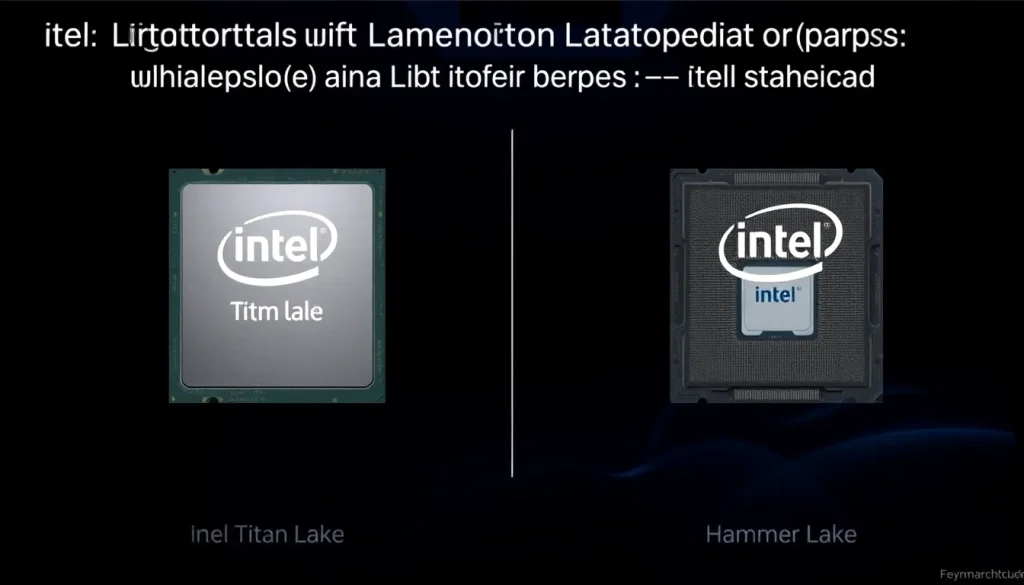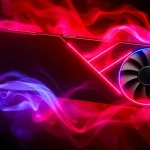Intel Titan Lake and Hammer Lake iGPUs to Include Feynman Architecture

As one of the most recognized names in the computing industry, Intel has experienced significant fluctuations in its relevance and market position over the years. Once a dominant player, the company now faces immense challenges, having lost billions due to issues like an underperforming Intel Foundry and a lack of compelling products. This has raised concerns about its ability to compete effectively, particularly against rivals like AMD. Recent updates from industry analysts and insiders have shed light on Intel's future CPU and GPU offerings, particularly the upcoming Titan Lake and Hammer Lake architectures.
The current state of Intel's product lineup has left many consumers and tech enthusiasts questioning the viability of investing in new Intel CPUs or GPUs. A review of recent developments reveals a range of issues, from instability in the Intel Core 13 and 14 series to disappointing performance from the Arc Alchemist GPUs, which suffered from driver problems. These concerns are compounded by NVIDIA's recent acquisition of a 5% stake in Intel, a strategic move aimed at developing system-on-chip (SoC) solutions that integrate Intel's x86 CPUs with NVIDIA's GPUs.
- Intel Titan Lake: A Refresh of Razor Lake with Limited Innovations
- Hammer Lake: Promising New Architecture and Enhanced Graphics
- NVIDIA's Role in Shaping the Future of Intel's Graphics
- The Evolution of Intel's Architecture: A Historical Perspective
- Understanding Intel's Naming Conventions
- Future Prospects for Intel and the Industry
Intel Titan Lake: A Refresh of Razor Lake with Limited Innovations
According to the latest insights from industry analyst Moore's Law is Dead, the Intel Titan Lake architecture will ultimately be a refresh of the existing Razor Lake design. While initially anticipated to introduce significant advancements, Titan Lake will primarily focus on enhancing integrated graphics processing units (iGPUs) rather than delivering groundbreaking CPU innovations. Expected to launch sometime in 2028, Titan Lake will be designed for laptops and mobile devices, with a notable shift away from the hybrid core architecture that characterized previous generations.
Initial reports suggested that Titan Lake would feature up to 100 E-Cores and abandon the P-Core and E-Core hybrid model. However, the most recent leaks indicate that consumers can expect only modest improvements over Razor Lake, akin to the differences seen between Intel’s Core 13 and Core 14 models. This trend raises questions about Intel's commitment to innovation in its CPU offerings.
Hammer Lake: Promising New Architecture and Enhanced Graphics
In contrast to Titan Lake, the Hammer Lake architecture is generating excitement within the tech community. Scheduled for release around 2029, Hammer Lake promises to deliver a much more powerful integrated graphics solution in a bid to compete effectively against AMD's offerings. Speculation suggests that this new architecture will pave the way for a more capable computing experience, particularly in graphics-intensive applications.
One of the most significant developments regarding Hammer Lake is Intel's collaboration with NVIDIA. Following NVIDIA's investment in Intel, the two companies are expected to work together to produce advanced iGPU tiles. Although the details about these integrated graphics remain sparse, the partnership indicates a strategic shift for Intel, which appears to be focusing on enhancing its graphical capabilities, a crucial area where it has struggled in the past.
NVIDIA's Role in Shaping the Future of Intel's Graphics
NVIDIA's involvement in developing the iGPU tiles for Hammer Lake could radically alter the landscape of the computing industry. With NVIDIA's experience in graphics technology, the collaboration is expected to yield superior integrated graphics performance. The timeline suggests that these iGPU tiles may coincide with the release of Titan Lake, although it is more likely that they will debut with Hammer Lake due to the anticipated advancements being made.
Insights indicate that NVIDIA's future architecture, referred to as Feynman, will serve as the foundation for these innovative processors. Expected to succeed the current Rubin architecture, Feynman could enable Intel to produce what some are calling "Mega APUs" — advanced processing units that combine high-performance CPU and GPU capabilities on a single chip. This development could significantly enhance the performance and efficiency of Intel's future offerings, aligning the company more closely with its competitors in the industry.
The Evolution of Intel's Architecture: A Historical Perspective
To fully appreciate the trajectory of Intel's architectures, it is essential to look back at the evolution of its microarchitectures. Intel has introduced several notable architectures over the years, each with its unique features and improvements. Some key architectures include:
- Nehalem: Introduced in 2008, Nehalem marked a significant shift with its integrated memory controller and QuickPath Interconnect (QPI).
- Sandy Bridge: Launched in 2011, this architecture introduced the concept of integrated graphics within the CPU package.
- Haswell: Released in 2013, Haswell improved power efficiency and introduced advanced features like AVX2 and hardware support for 4K video.
- Skylake: This 2015 architecture delivered enhanced performance and better power management, marking a critical evolution in Intel's offerings.
- Coffee Lake: A direct successor to the Skylake architecture, Coffee Lake increased core counts and improved multi-threaded performance.
Understanding Intel's Naming Conventions
Intel's use of the "Lake" nomenclature in its architecture names has raised questions among consumers and industry analysts alike. The term is thought to represent a thematic approach to categorizing its processors, with various "lakes" denoting different generations and capabilities. The following is a brief overview of the naming conventions:
- Lake: Denotes the overall family of architectures.
- Titan: Suggests significant advancements or enhancements in performance.
- Hammer: Indicates a focus on integrated graphics and potential hybrid designs.
This systematic approach aids consumers in understanding the relative performance expectations and technological advancements associated with each generation of Intel processors.
Future Prospects for Intel and the Industry
The future of Intel hinges on its ability to innovate and adapt to the rapidly changing landscape of the computing industry. With competitors like AMD and NVIDIA pushing the boundaries of performance and efficiency, Intel must leverage its strategic partnerships and technological advancements to regain its competitive edge. The anticipated release of Hammer Lake and its powerful iGPU capabilities could serve as a turning point for the company, potentially reshaping its position in the market.
As we look forward, several factors will play a crucial role in determining Intel's success, including:
- The execution of its partnership with NVIDIA.
- The successful launch and market reception of Titan Lake and Hammer Lake.
- Ongoing developments in process technology and manufacturing capabilities.
In conclusion, the landscape of Intel's offerings is evolving. With the impending release of new architectures and collaborations, the company stands at a crossroads that could either mark a resurgence in its market dominance or further entrench it in a challenging competitive environment.




Leave a Reply